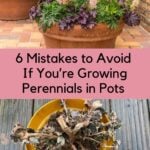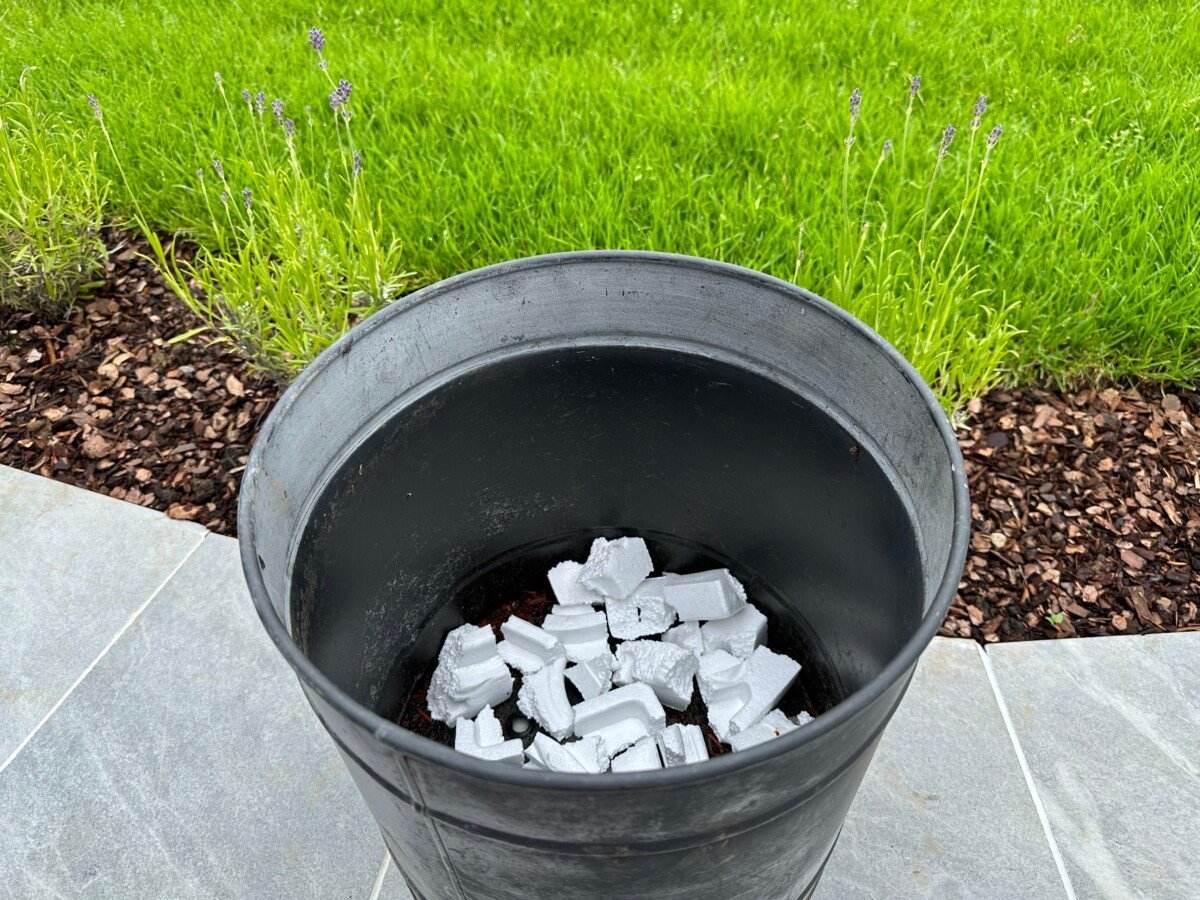
I usually draw inspiration for my articles from whatever is happening in my garden. But for this one, it’s different.
What inspired this article was an unfortunate piece of advice on container gardening in a gardening book I’ve been reading recently.
This book – which I shall not name – is all about sustainable gardening and it’s written by a well-known garden and landscape designer. But somehow it still had this baffling suggestion: half-fill your containers with styrofoam to save on using too much potting soil.

What in the world was this author on about?
Not only is using styrofoam the opposite of sustainable gardening, it would certainly be a container planting mistake. Plants in containers need soil to grow their roots in. Perennials even more so than annuals. In addition, adding this filler material would not only impede drainage, but also leech into the soil and contaminate it with microplastics.
This got me thinking about other mistakes we make when it comes to planting perennials in pots. Don’t get me wrong, I’m far from perfect and I’ve made all of these mistakes. Though I draw the line at using styrofoam in the garden. Still shaking my head at this weird piece of advice.
Here are a few perennial container gardening mistakes to avoid when you plant your outdoor pots.
1. You don’t go for a small cultivar suitable for container growth.
I’m the first to admit that I have used containers as a sort of garden overflow solution. When I had some perennials that I needed to divide – and no room to replant all the divisions – in a pot they went. Similarly, when I started too many seedlings, the extra plants went into containers as a backup.
But the difference is that I didn’t expect much from these containers and I was thrilled if/when they thrived.
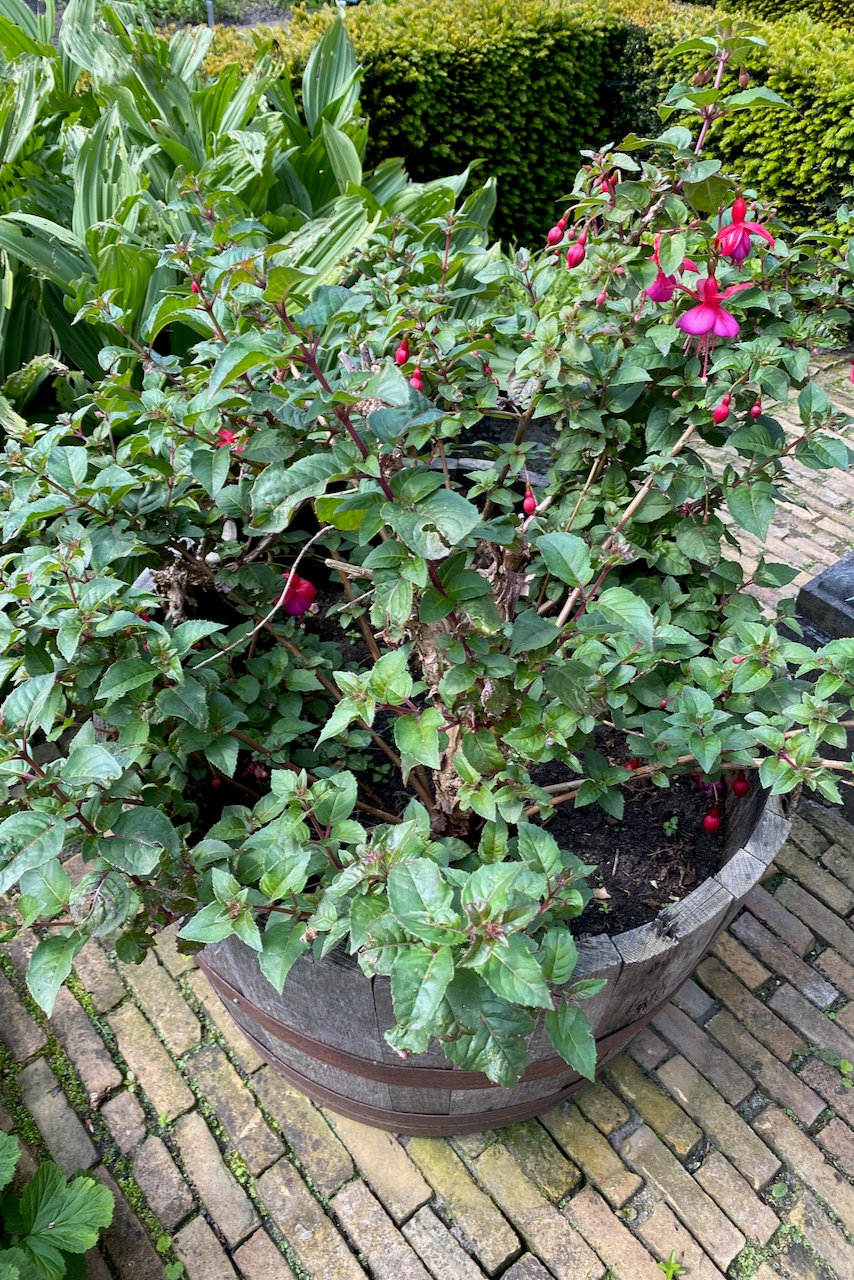
Now if you’re planting a pot from scratch, I would recommend that you find cultivars that are suitable for container growing. Most perennials nowadays have at least a few versions that have been bred to grow more compact. The clue is often in the name, with words such as “mini”, “miniature”, “dwarf”or “little” as part of the name of the cultivar. Don’t forget to read the label and see if you can find a symbol to indicate that the plant is suitable for containers.
With the advances of modern horticulture, you can even find shrub cultivars that are bred for life in containers, such as camellias, rhododendrons, hydrangeas and fuchsias.
2. You don’t plant for seasonal changes.
This one takes a bit of trial and error, and not all perennials will look their best in all seasons. But depending on what climate you’re gardening in, you might be able to grow perennials in containers all year round.
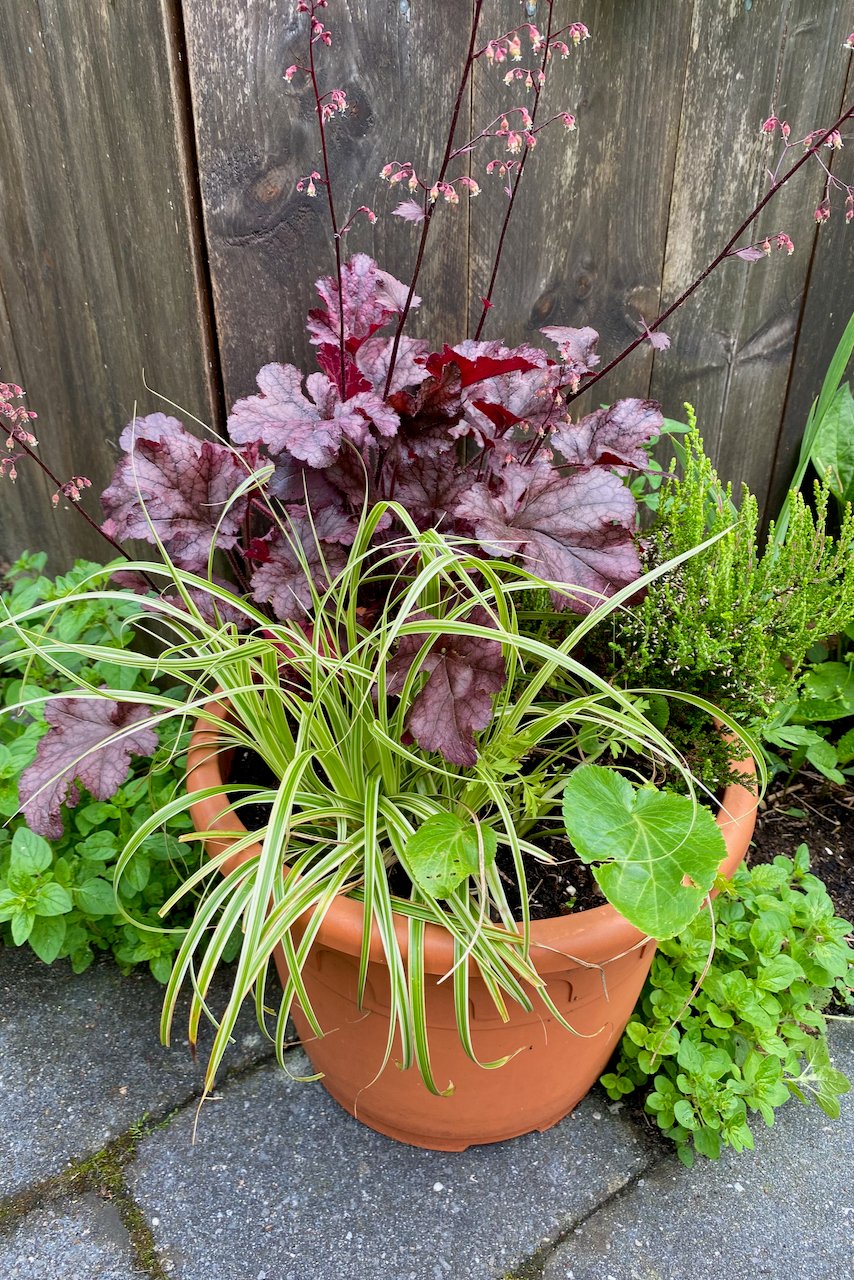
Even if not all of your containers will keep their seasonal interest for months, you can add some evergreens for a more cheerful transition into (and out of) the cold months. Look for perennials such as heather, glechoma and heuchera to stave the drabness of winter in your container garden.
3. You start your containers from scratch every time.
Designing and planting a container from scratch brings me a deep feeling of joy. I love thinking about the purpose of the container, picking plants that match my goals and getting my hands dirty.
But doing so every year with every container I have would be not just unsustainable, but downright unaffordable. So I don’t wipe the slate clean every time, but reuse and work around what I have.
Take, for example, the sensory container that I planted in this large terracotta pot the previous May.
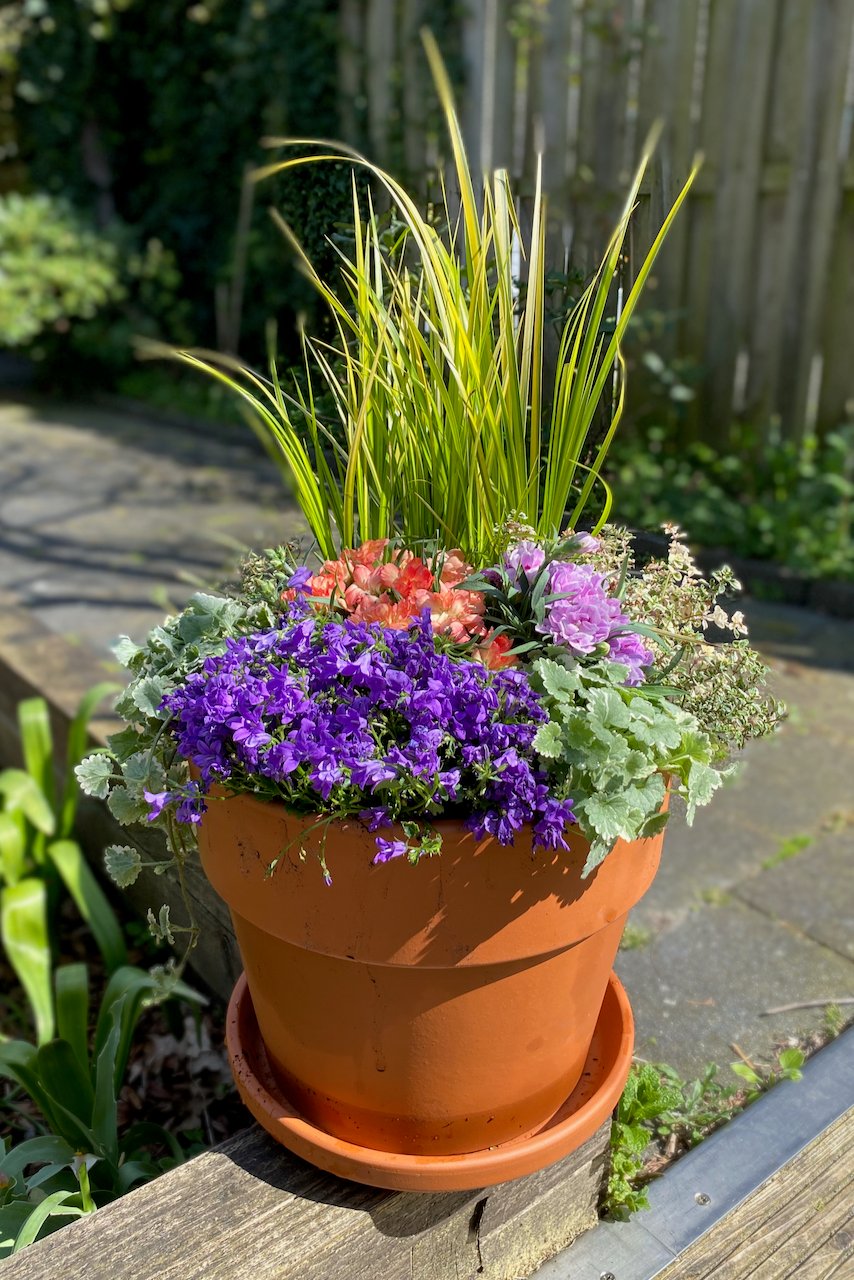
The arrangement lasted well into the fall, when I replaced the annuals with chrysanthemums. This May, I planted some forget-me-nots as placeholders for summer flowers that I’m growing from seed.
In the meantime, the variegated glechoma and the ornamental grass (Acorus gramineus) – both evergreen perennials – have been framing everything nicely.
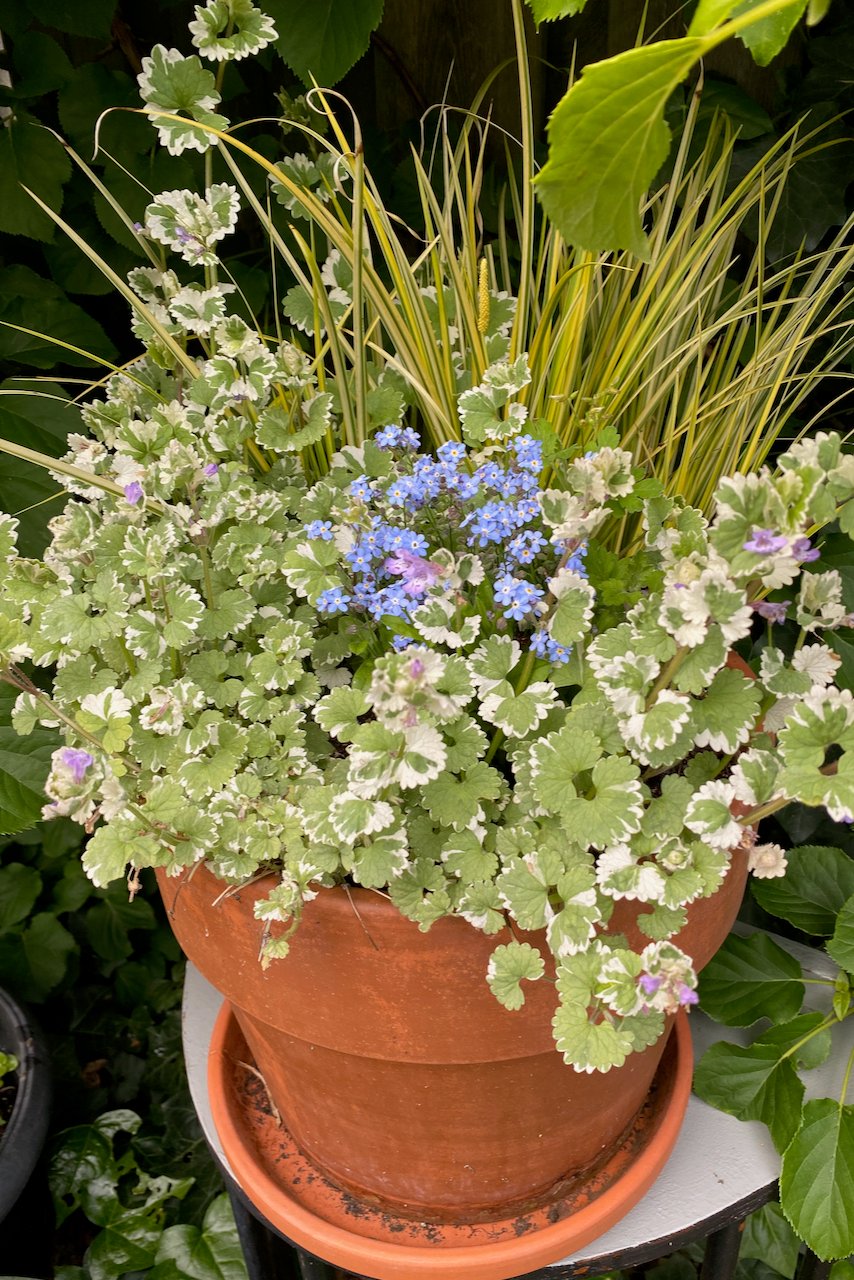
In the fall, the chrysanthemums will bloom again, thus resetting the perennial cycle of a perennial container. Then next spring, the forget-me-nots will bloom again. You get the idea. I’m creating three iterations of the same container for the price of one.
4. You use pots that are too small.
As I mentioned in my previous point, I’m a big proponent of using what we have before shelling out for something new. But sometimes that can backfire and we end up wasting even more money, time, and resources. The classic trap that I’ve fallen into (repeatedly, I’m not ashamed to admit) is using pots that are too small for the plants I’m hosting in them.
There are two main problems with using small pots. First of all, if you’re planting a perennial that has a larger root structure, a small pot will impede root growth. Which, in turn, will prevent the plant from growing and sometimes flowering.
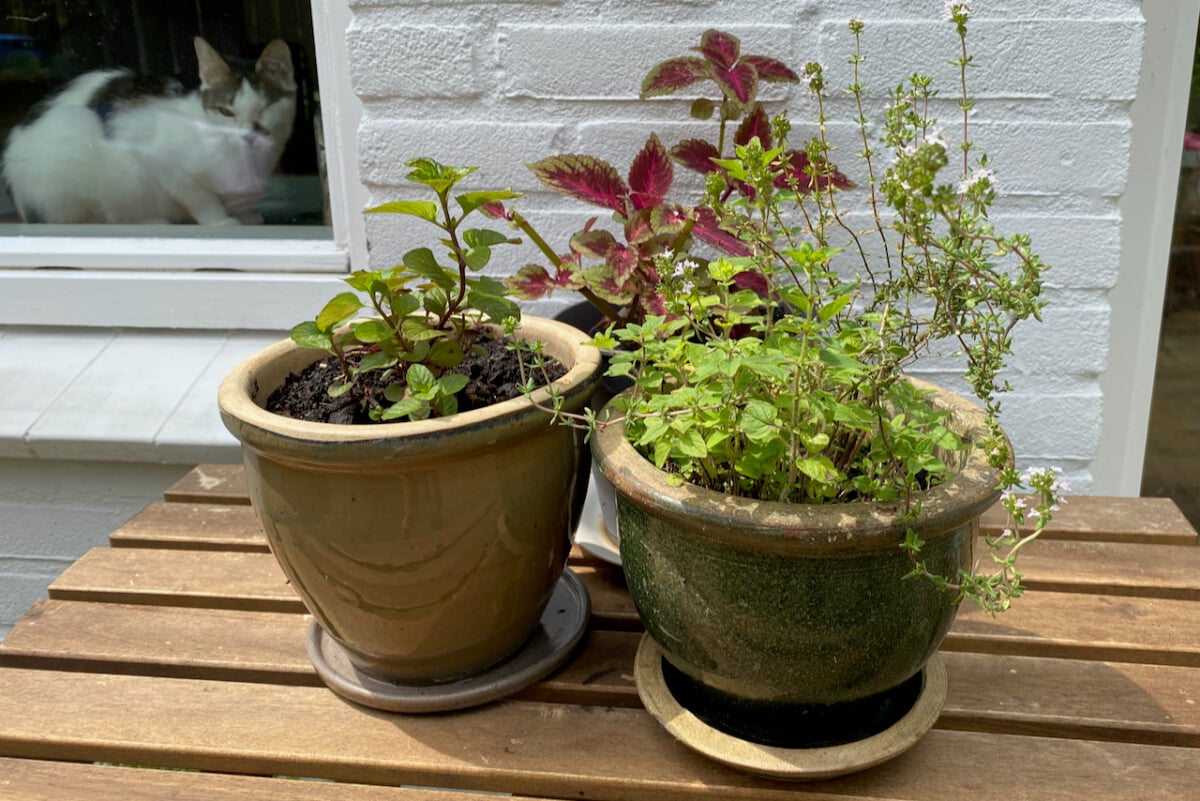
Secondly, small containers dry up too fast in the summer heat. You’re setting yourself up for too much watering work if your container is small.
However, I know that not everyone has room for large pots. I used to garden on a very small wedge-shaped balcony where I couldn’t have possibly fit anything larger than two gallons.
In that case, my solution was to have drought-tolerant plants that didn’t need much root space. Succulents are a great choice for small containers. They don’t need too much water and they don’t grow a large root structure.
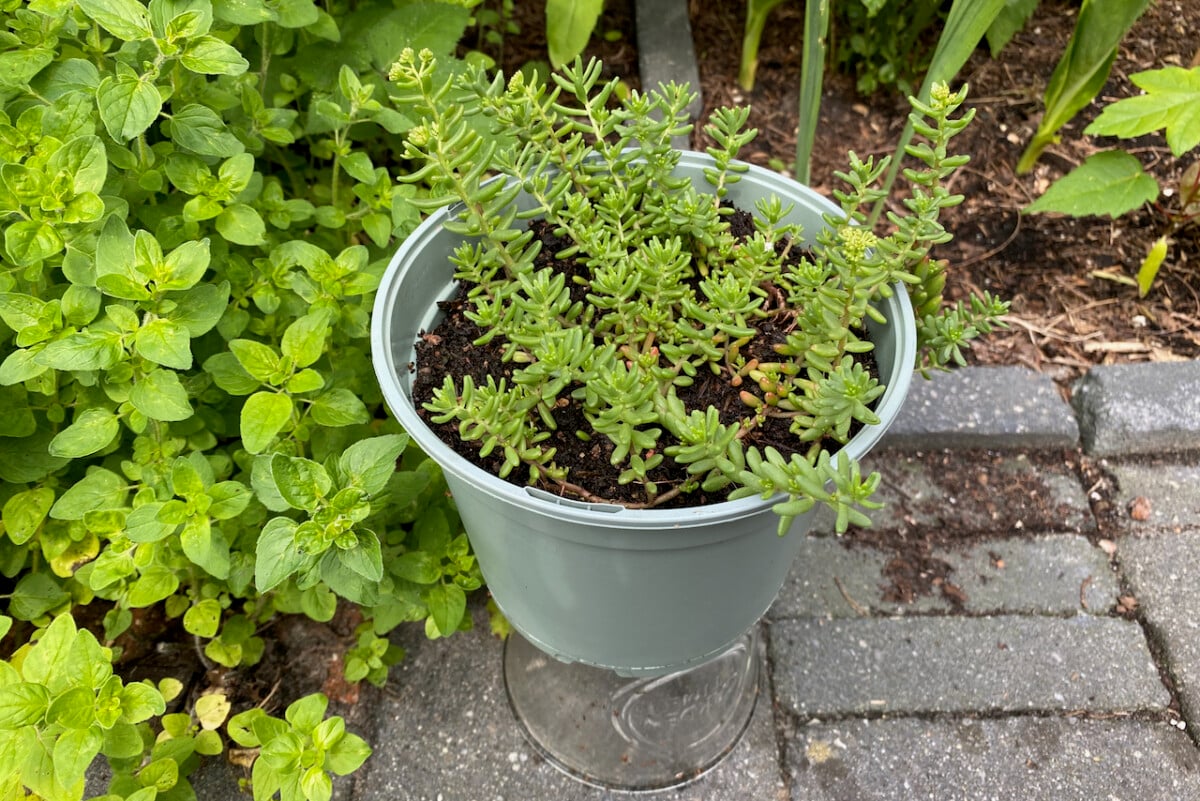
For more tips on how to garden in shallow soil, have a look at this article I wrote about rehauling my shallow mulch-only front garden.
And while we’re at it, I think I should remind our readers that all containers, including outdoor ones, need drainage holes. Multiple drainage holes, evenly distributed, are better than a single one. But one is still better than none.
5. You mix plants with different needs in the same pot.
I’m a big fan of the simplicity of single-plant containers. But at the same time, I don’t want to miss out on the beauty and elegance of mixed containers. Mixing and matching container plants is a creative labor of love. And so much fun.
I wrote an entire article on different container combinations (twenty, to be precise), so I’m all for creating mixed displays.
However, where we sometimes get into trouble is when we mix plants with different needs. This may not be such a problem if we’re planting annuals. They will only have to put up with a few months of mismatched needs.
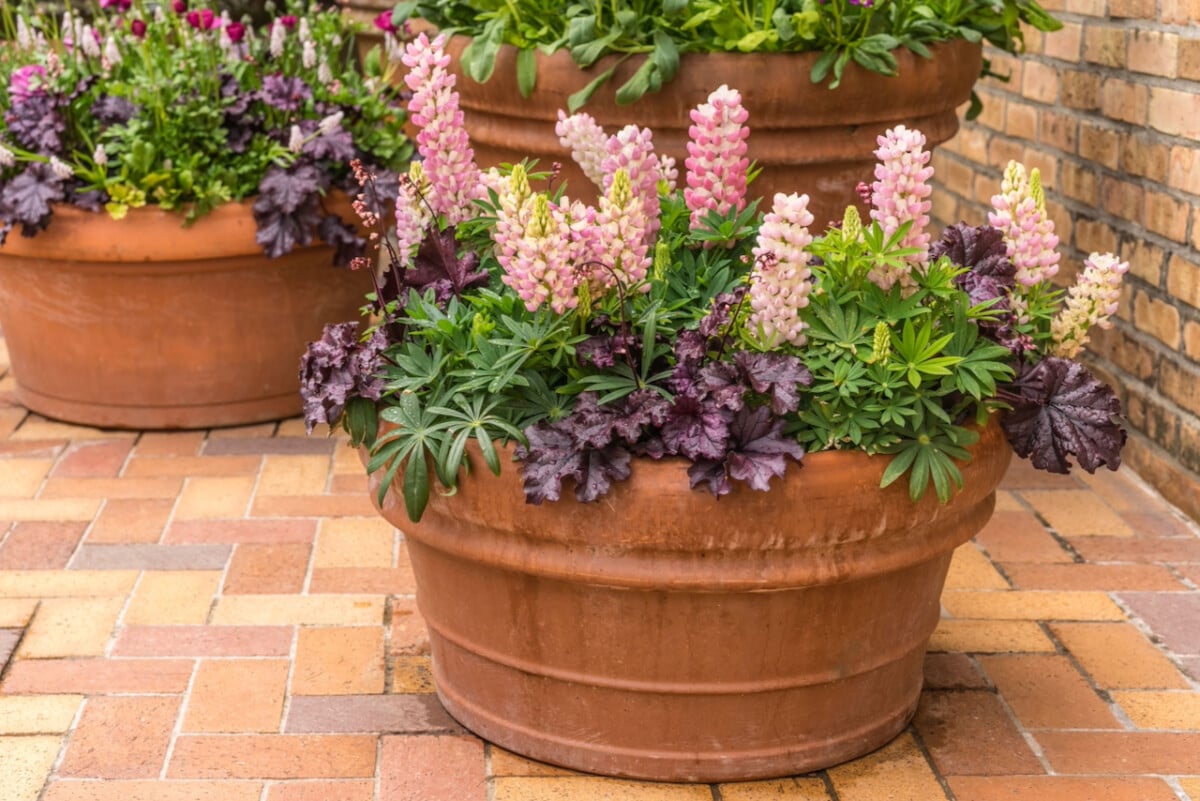
But with perennials, it can make all the difference between a struggling plant and a thriving one.
There are two primary plant needs to pay attention to: water and light. Avoid combining in the same pot plants that don’t need too much water (for example, sedum) with plants that need a lot (such as hydrangeas). Because when you water your hydrangeas abundantly, you risk overwatering your sedum.
When it comes to light, there’s a little bit more leeway. But don’t mix plants that prefer opposing ends of the spectrum. Shade-loving plants will be scorched in full sun. And sun-loving plants might not grow as fast or flower as much in the shade.
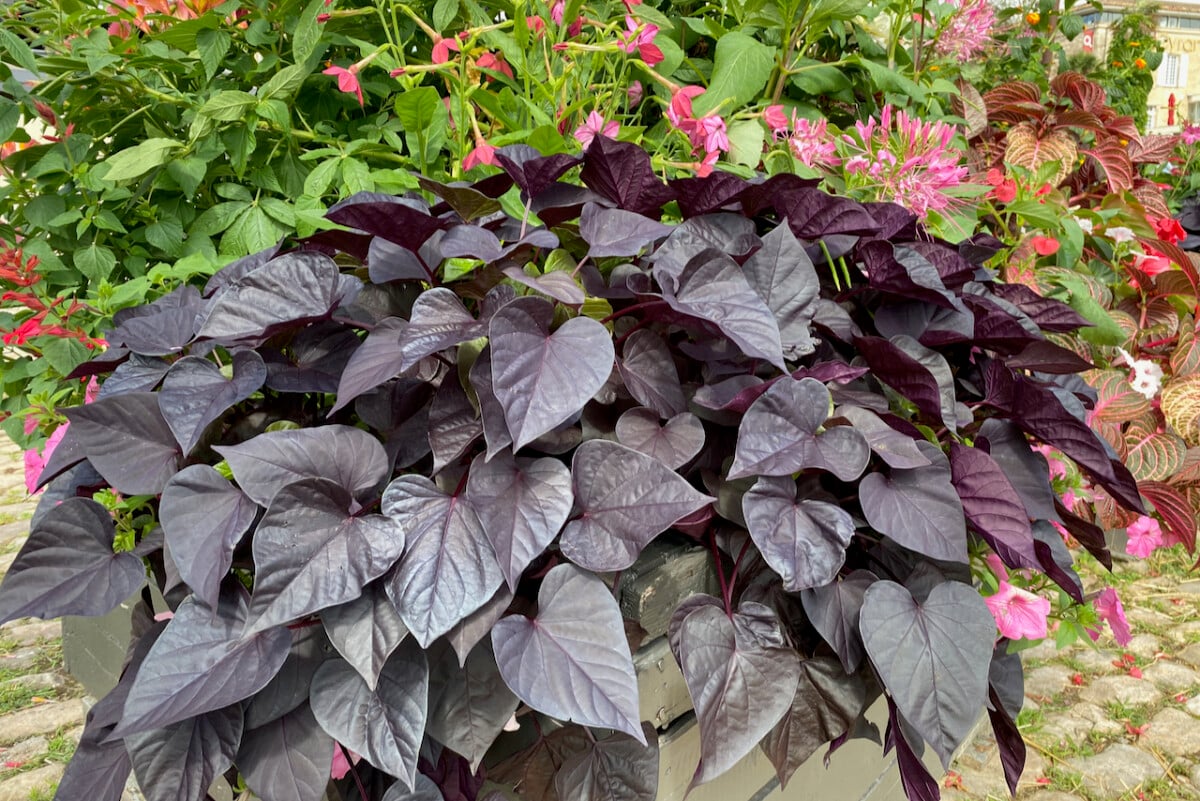
I would start by first deciding where the container will live for most of the growing season. Then choosing plants based on the intended location of the pot.
Sure, experiment with textures and colors to help you decide what you like. But always do your best to match the needs of the plants.
6. You don’t have a plan on how to overwinter perennials in containers.
I wouldn’t normally mention overwintering in an article on container gardening. But since we’re talking about perennials here, it’s only natural to have a plan in place to enjoy them year after year. So not thinking ahead on how to do that could prove to be a mistake in a lot of scenarios.
Here are a few examples of what I mean:
Don’t leave young perennials to fend for themselves in the cold before they’ve had a chance to get established. Have a plan in place to overwinter young plants in a sheltered location.
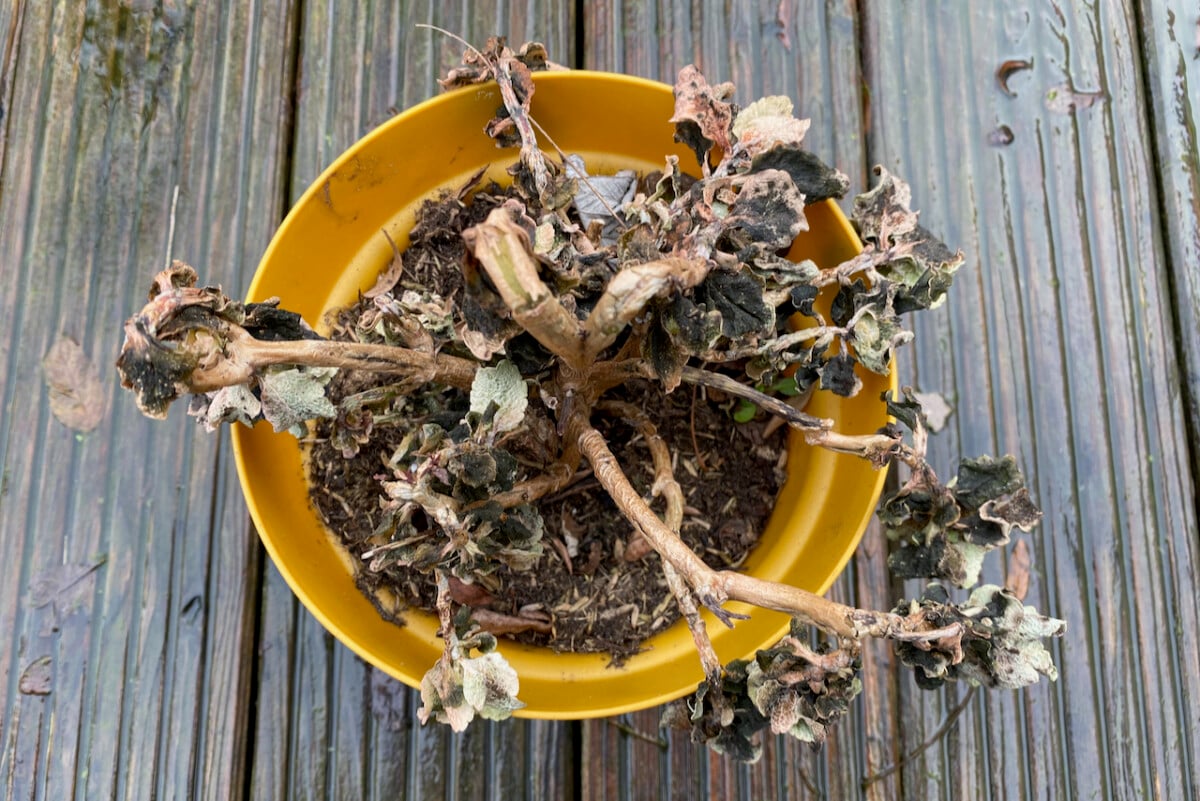
Don’t plant in a terracotta pot if you garden in a place where you get a lot of deep freeze and you don’t have anywhere frost-free to move your pots. Cheap terracotta might shatter due to temperature fluctuations in the winter. It will make a mess and leave the roots of your perennials exposed.
If you move the pots in a shed, garage or porch over the winter months, make sure you check on them occasionally and don’t let them dry out completely.
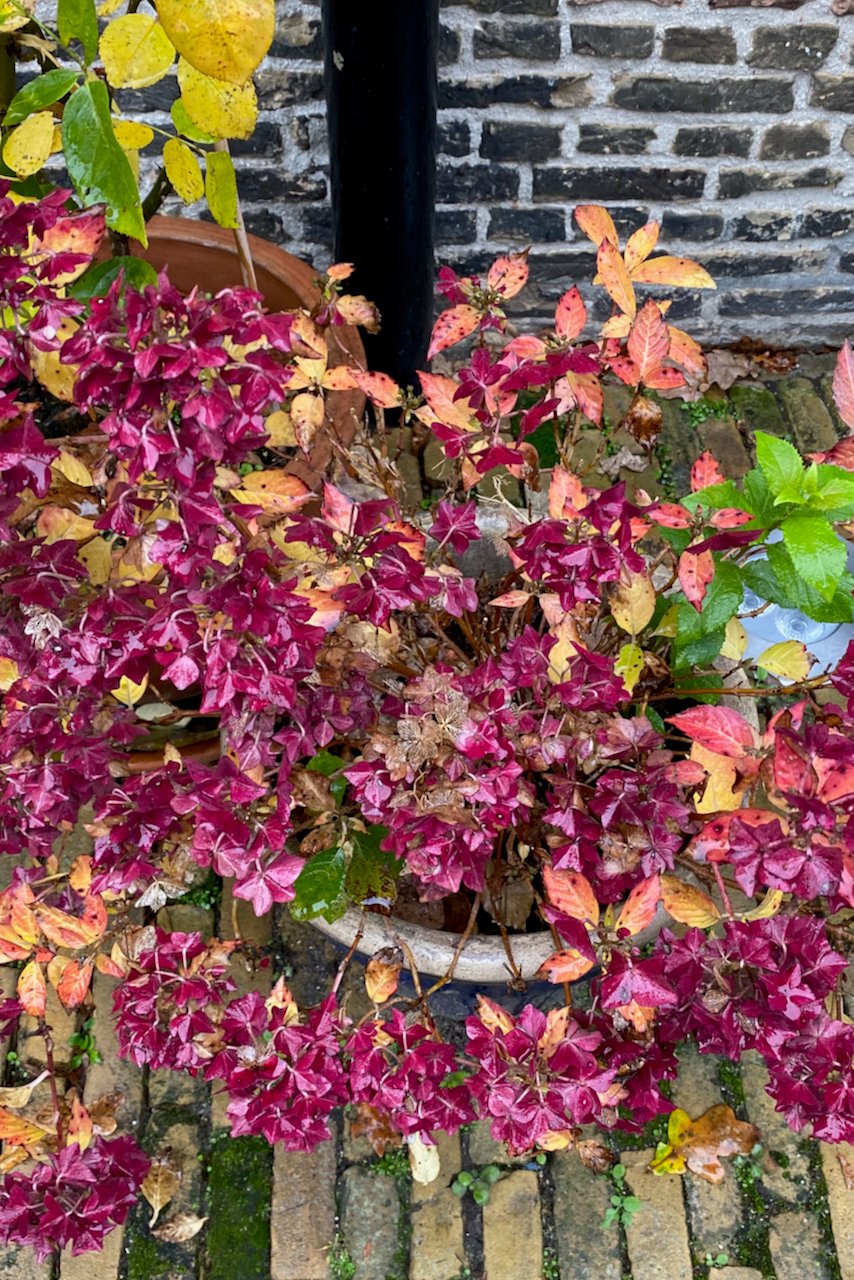
Also, keep in mind that perennials need a period of dormancy, so don’t keep them in a heated room over the winter.
And while we’re at it, remember to always have a backup plan in case your container perennials don’t make it through the winter. You can take cuttings in fall for most perennials or do some propagation by layering your perennials in smaller containers (which you can then move indoors as backups).
There are a lot of moving parts to consider when planting perennials in pots long-term. But if you manage to avoid these mistakes, you’ll be enjoying a successful container garden for years to come.

